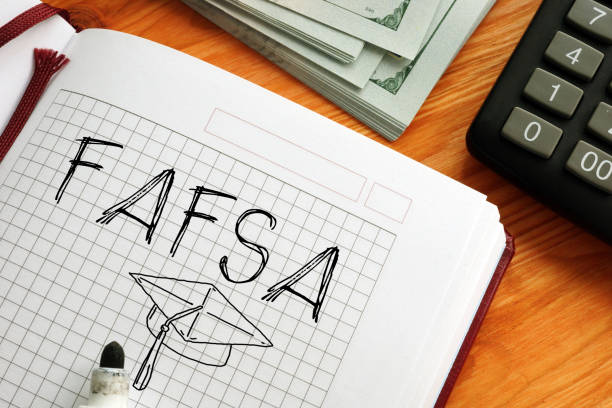FASFA Q&A
Free Application for Federal Student Aid FAFSA is shown on a photo using the text
Oct 6, 2022
The FAFSA has commonly been conversed about in recent senior class meetings, but some students still might not be sure what exactly it is. After thorough research and communication with Mrs. Rountree, our school’s College, Career, & Military Readiness Advisor, I was able to gather some useful information to share.
Q: What does FAFSA stand for and what does it do?
A: The acronym FAFSA stands for the Free Application for Federal Student Aid. It serves as a method of financial aid for students planning to attend a path of secondary education.
Q: Who is eligible for the FAFSA?
A: There are some eligibility requirements in order to receive financial aid for the FAFSA. Information on restrictions, and how to maintain and regain eligibility can be found on the Federal Student Aid website.
Q: Why is the FAFSA important?
A: The FAFSA helps the federal government determine what loans and grants you qualify for, as well as student aid. It can allow for students to continue their education after high school who may not be able to afford it on their own.
Q: Are students required to apply?
A: In the state of Texas, the FAFSA is a graduation requirement, unless a student formally opts out.
Q: How can students prepare for their FAFSA application? What materials do you need?
A: Some required materials include your social security number, your alien registration number (if you aren’t a US citizen), 2021 Tax Returns, W-2s, and other records of earned money, bank statements and records of investments (if applicable), records of untaxed income (if applicable), a Federal Student Aid User ID and password to sign electronically. More materials may be needed. For dependent students, this information will need to be obtained from a parent that claims them on their taxes.
Q: Where do students apply for the FAFSA?
A: Students can complete their FAFSA application at studentaid.gov.
Q: When can they start applying? When is the deadline?
A: This year’s FAFSA opened up on October 1st, 2022. Deadlines vary depending on the school you are applying for. The federal deadline is on June 30, 2023.
Q: Can a student’s household income be too high when it comes to applying for financial aid?
A: There is no income maximum when applying; aid can be granted to any student regardless of income.
Q: What do students do if they receive aid? Does it come in every year or do they need to reapply?
A: If offered, students can claim the aid offers that they need, or reject the ones that they don’t. Students must reapply each year.
Q: What if a student’s parents don’t have social security numbers?
A: The citizenship status of a student’s parents will not affect their application.
Q: How do independent students apply (non-dependents)?
A: Students have to qualify as an independent student first. The FAFSA will be completed the same, just with the student’s taxes instead.
Q: What is the Student Aid Report (SAR)?
A: The SAR is a report that allows the students to see which financial aid opportunities are available to them.
Q: What if there is an error in one’s FAFSA responses after it has already been
submitted?
A: Changes and corrections to a student’s FAFSA can be made at any time after it’s been submitted. Information submitted must stay up to date and accurate.
Q: Where should students go for assistance filling out the FAFSA? Workshops?
A: Workshops – October 7th 12:00-3:00PM @Steele Library
Assistance for Students:
October 17th 5:00-7:00PM @Steele Library
Assistance for Parents and Students
Other – Saturdays 9:00AM-1:00PM @All Alamo Colleges








